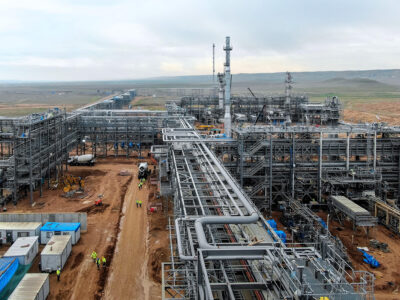Sky-high oil prices are beginning to dent oil demand growth, the International Energy Agency said on Tuesday, adding prices could ultimately moderate through a global economic slowdown.
“Most analysts see a more formal OPEC policy response as unlikely… That leaves a less palatable route to price moderation — namely economic slow-down and weaker demand growth,” the agency, which advises 28 industrialised countries on energy policy, said in its monthly report.
“There are real risks however that a sustained, $100 per barrel plus price environment will prove incompatible with the currently expected pace of economic recovery,” it added.
The agency said data for January and February suggested that high oil prices may have started to dent demand growth. It however kept its 2011 global oil demand growth forecast unchanged at 1.4 million barrels per day or 1.6 percent.
The head of the IEA’s oil industry and markets division David Fyfe said the agency had noticed slowing demand trends in the United States and Asia Pacific in the past months.
“There’s been a marked slowdown since autumn last year. China is looking a bit slower. Thailand and Malaysia have seen a bit of a slowdown,” he said.
“We are quite early in the cycle, we have only been above $100 a barrel for the first quarter. We would expect sustained economic effect from prices to take 6 to 12 months to fed through,” he added.
He said that slower demand in some Asian countries could be offset by stronger demand from Japan which may have to ramp up its oil use by about 150,000 barrels per day to compensate for lost nuclear power generation after a devastating quake.
Fyfe also said that despite early signs of demand destruction because of high oil prices, it was too early to predict the end of the rally.
“It’s difficult to see where is the high water mark for political unrest. Arguably some of this uncertainty in the MENA (Middle East-North Africa) region has a while further to run,” he said.
The IEA said tight supply was a further concern. Global oil output fell by around 0.7 million barrels per day in March to 88.27 million bpd due to civil war in Libya.
“Hypothetically, if global supply were to chug along at March levels for the rest of 2011, OECD inventory could slip to near five-year lows by December,” it said.
The IEA said OPEC March production was 0.6 million bpd below what it sees as average demand for OPEC oil in 2011.
However, the IEA said it believed OPEC spare capacity stood at a comfortable level of 3.91 million bpd, with Saudi Arabia accounting for 3.2 million alone, countering industry concerns OPEC’s spare supply cushion was much smaller.
“The response from OPEC to the loss of Libyan crude has been quite modest. We are still waiting to see much sign of a pickup in terms of rising OPEC supplies,” said David Fyfe, head of IEA’s oil industry and markets division.
The IEA also said non-OPEC output was up 0.2 million bpd in March to 53.3 million despite unrest and strikes in Yemen, Oman, Gabon and Ivory Coast.







